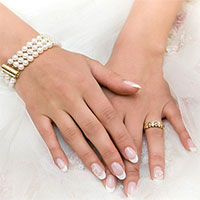Surely every student’s life is held through a gun when studying in the military. Usually we will learn how to aim with one eye. However, some professional shooters like to aim with both eyes. Why is that? Which way would be more efficient? So what are the pros and cons of each way?

Which eye to choose depends on whether you are left- or right-handed.
Aiming with one eye seems to be a familiar way of aiming for those who are new to guns. The action consists of closing one eye, then aiming at the target through the scope or scope on the gun with the other eye. The choice of which eye to aim depends on whether you are left- or right-handed, but it is best to aim with that eye closest to the gun.
The reason this aiming method is instructive for most gun beginners is that it’s completely natural. According to the NRA shooting guide page, most of us have a dominant eye, which roughly means that this eye will be able to record distant image data and transmit it to the brain better than the other eye. again. You can search online how to determine which is your dominant eye.
Also, closing one eye helps you focus more on the line of sight and not be distracted by other objects.
However, according to the majority of experts and shooting instructors, the fact that too much focus on one target is actually a drawback. Many are trained in the use and possession of firearms for self-defense or recreational hunting. When using a gun in these circumstances, you will need to observe everything around you.
Although having one eye will make it easier for you to focus on your target, it limits your vision and ability to perceive your surroundings.
In summary, aiming with one eye has advantages and disadvantages, including:
Binocular aiming is a less common way of shooting. However, experts and experienced gun users prefer this option.

Binocular aiming increases the ability to observe.
One of the most obvious and important advantages of binocular aiming is increased visibility. Hunters will be able to look across the sky or the horizon to spot not only a mallard directly in front of the gun, but also subsequent targets 15 meters away.
Aiming with both eyes greatly increases the number of consecutive shots that can be fired. In other words, this method allows you to quickly switch between targets without being disoriented and time-consuming like when aiming for a monocular.
Gun users will have to take a while to practice to be able to get used to the binocular aiming method, especially for those who are used to using one eye. When you first practice this aiming method, your instincts will urge you to “cheat” by half-closed or completely closed eyes. You don’t have to try to stop it! Your instincts will slowly change as you get used to aiming with both eyes.
If you’re using goggles, you can apply lip balm on the non-dominant side of your eyewear to blur it out a bit. This will help your brain get rid of the illusionary effects that cause the real image to be duplicated and allow you to focus on the target with both eyes open.
In short, with binocular aiming, you can:
In the end, it doesn’t really matter whether you choose to use one- or two-eyed aiming. Most coaches will advise you to use the method that works best for you for the best results. If you’ve learned to aim with one eye, training with two eyes can be quite challenging. However, each method has its own advantages and disadvantages. So, it doesn’t hurt to try each way to choose the one that works best for you.

